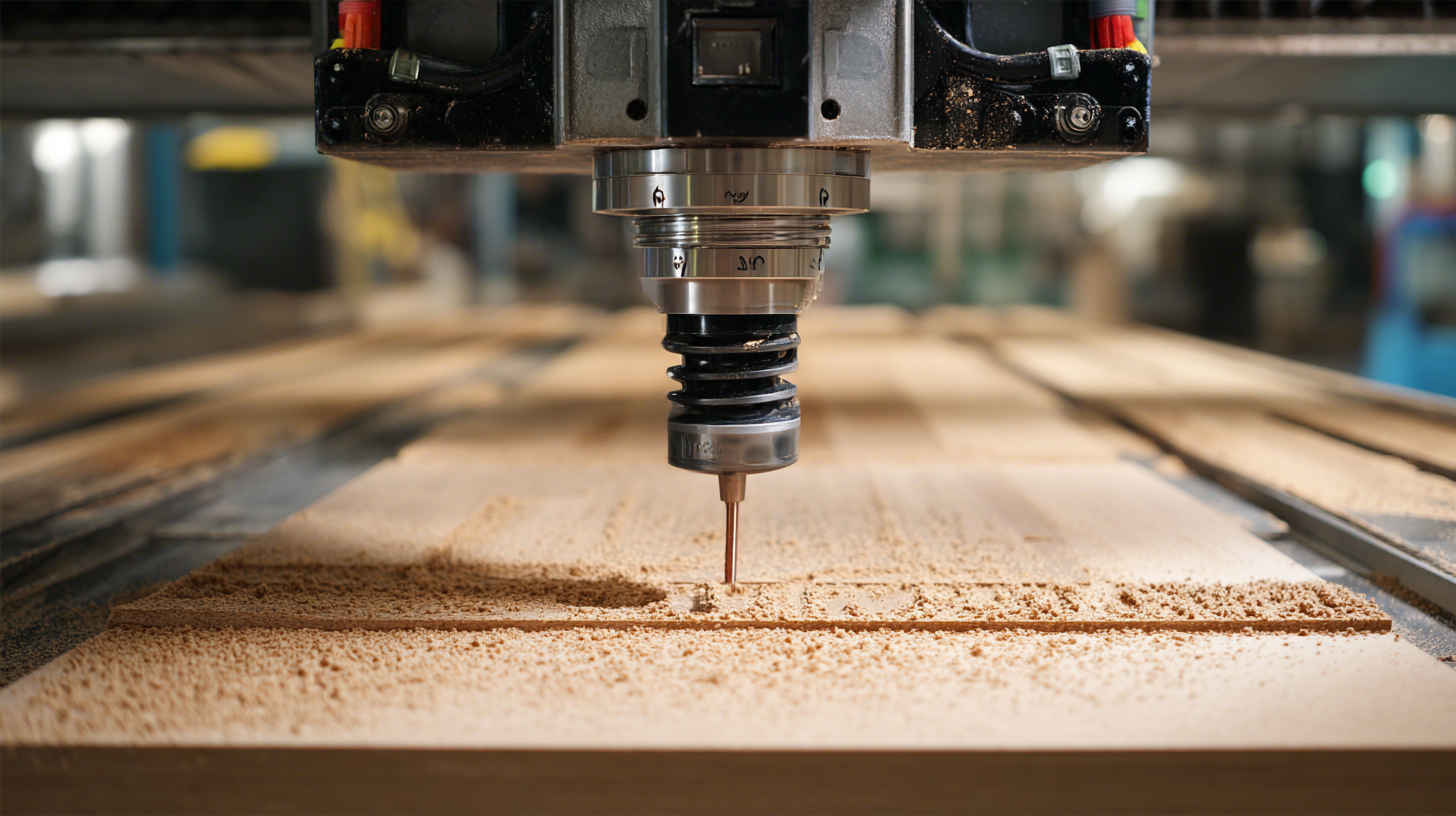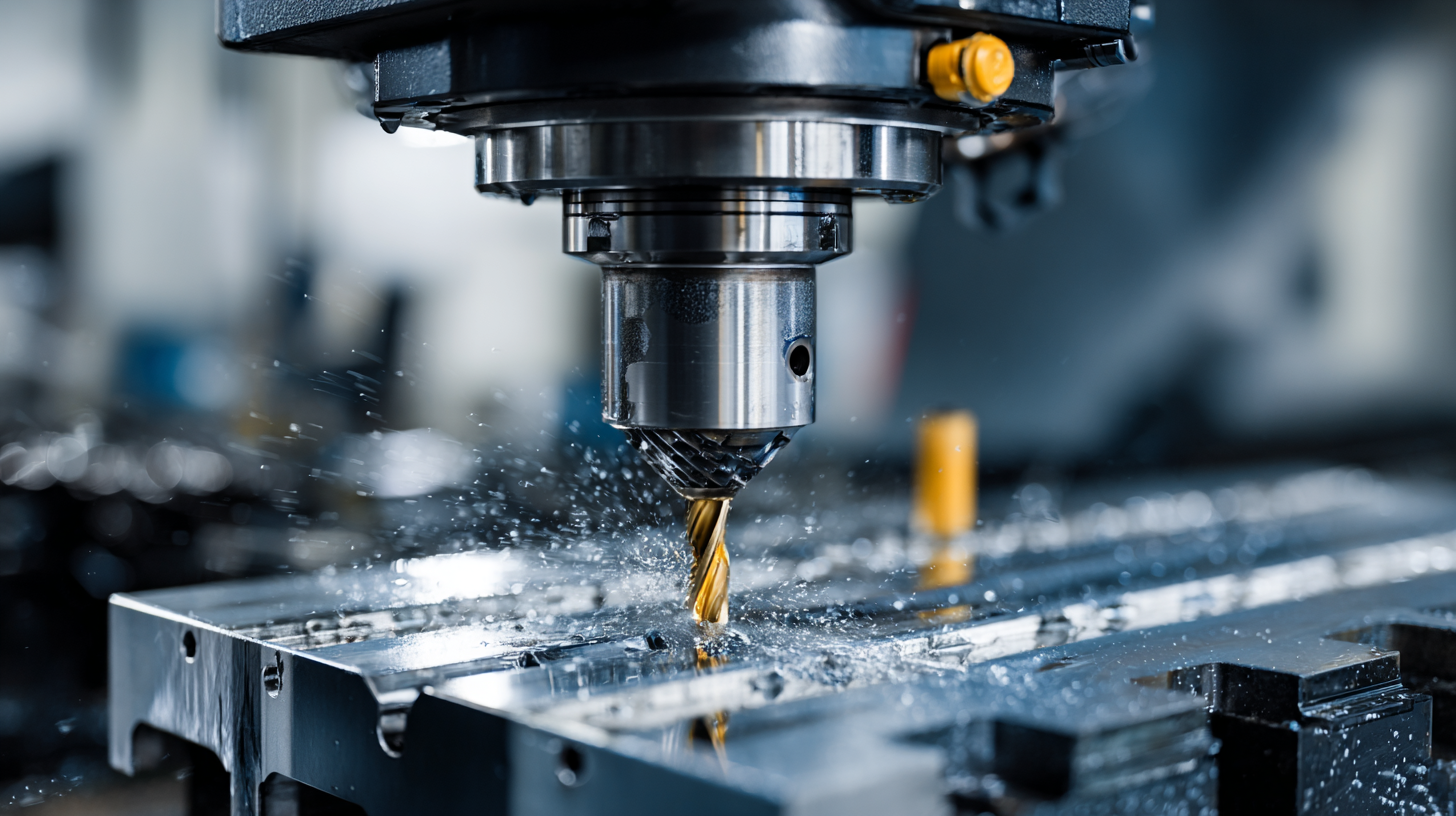
In the rapidly evolving manufacturing sector, the adoption of efficient CNC cutting techniques has become paramount for enhancing global procurement strategies. According to a report by the International Federation of Robotics, the CNC machine market is projected to grow at a compound annual growth rate (CAGR) of 6.5% through 2025, highlighting the increasing reliance on advanced cutting technologies.
CNC cutting not only optimizes production processes but also significantly reduces material wastage, with studies indicating that modern CNC methods can lead to up to 30% savings in raw materials.
As manufacturers strive for competitive advantages in a globalized economy, leveraging the precision and efficiency of CNC cutting is essential for streamlining operations and improving supply chain management. By investing in state-of-the-art CNC technologies, companies can enhance their procurement capabilities while meeting the rising demand for high-quality, cost-effective products.

Efficient CNC cutting techniques are essential for enhancing global procurement, especially as industries increasingly rely on precision and speed. One of the key factors influencing CNC cutting efficiency is the choice of tooling and materials. According to a report by Grand View Research, the global CNC machine market is expected to reach $100 billion by 2025, driven by the demand for high-quality and accurate manufacturing processes. The selection of high-performance cutting tools can result in significantly lower cycle times and improved part quality, thereby reducing overall production costs.
Another crucial aspect is the optimization of machining parameters such as feed rates and cutting speeds. The American Society of Mechanical Engineers (ASME) indicates that the right combination of these parameters can boost productivity by up to 30%. Implementing advanced software for simulation and scheduling can further enhance these efficiencies, allowing manufacturers to predict and mitigate potential bottlenecks.
**Tips for Improving CNC Cutting Efficiency:**
1. Regular maintenance of CNC machines ensures they operate at peak performance and minimizes downtime.
2. Invest in training for operators to ensure they are proficient in handling both the machines and the software, thereby reducing errors and increasing output quality.
3. Utilize real-time monitoring systems to track tool wear and adjust parameters dynamically, thereby extending tool life and reducing waste.

The global CNC machine market is set to experience substantial growth, with projections estimating a rise from $101.22 billion in 2025 to an impressive $195.59 billion by 2032, reflecting a compound annual growth rate of 9.9%. This growth is driven by ongoing advancements in CNC technologies, which are essential for streamlining cutting processes across various industries. The demand for efficient, precise, and reliable cutting techniques is pushing manufacturers to adopt innovative solutions that not only improve production rates but also enhance overall quality.
Recent breakthroughs in laser cutting technology highlight the importance of staying at the forefront of CNC developments. Companies are making significant strides to optimize their cutting processes, such as introducing debris-free laser cutting techniques for materials like copper pipes. These innovations not only address traditional challenges but also open new avenues for application, thereby reinforcing the core value of CNC technologies in manufacturing. By focusing on efficient cutting methods, manufacturers can contribute to enhanced global procurement, enabling them to meet the rising demands of an evolving marketplace.
| CNC Technology | Cutting Precision (mm) | Material Types | Processing Speed (m/min) | Application Sector |
|---|---|---|---|---|
| Laser Cutting | 0.1 | Metals, Plastics, Wood | 20 | Aerospace, Automotive |
| Waterjet Cutting | 0.5 | Stone, Glass, Metal | 5 | Construction, Signage |
| Plasma Cutting | 1.0 | Steel, Aluminum | 9 | Manufacturing, Metalworking |
| CNC Milling | 0.01 | All Metals, Plastics | 2 | Electronics, Aerospace |
| CNC Routing | 0.2 | Wood, Composites | 15 | Furniture, Boat Building |
In the rapidly evolving landscape of CNC cutting, optimizing materials is critical for improving efficiency and reducing waste. According to a report by IBISWorld, the CNC machining industry is projected to grow at an annual rate of 4.5%, emphasizing the need for stakeholders to adopt innovative techniques in their procurement strategies. A comprehensive checklist for materials optimization can significantly impact procurement processes, ensuring that manufacturers not only choose the right materials but also manage them effectively throughout the cutting process.

Key considerations in materials optimization include assessing material properties, lifecycle costs, and compatibility with cutting tools. Selecting the appropriate substrate—such as aluminum, steel, or composite materials—can lead to savings of up to 20% in production costs, as highlighted in the Materials and Manufacturing Program by the National Institute of Standards and Technology (NIST). Additionally, implementing cutting-edge software solutions to analyze real-time data can further streamline operations, leading to improved precision and reduced material waste by nearly 15%. Embracing these practices not only enhances efficiency but also positions companies favorably in the competitive global market.
CNC machine maintenance is crucial for achieving optimal output and ensuring longevity in your manufacturing processes. Regular inspection of key components such as the spindle, bearings, and coolant systems can prevent costly breakdowns and downtime. Implementing a daily, weekly, and monthly maintenance schedule allows operators to address wear and tear before they escalate into more substantial issues. This proactive approach not only enhances precision in cutting techniques but also contributes to a smoother workflow, maximizing efficiency in production.
Additionally, training staff on best practices for CNC maintenance can lead to significant improvements in machine performance. Encouraging operators to maintain cleanliness around the machines and to perform routine checks can minimize the risks of malfunctions. Equipping the team with knowledge about the specific needs of different CNC models ensures that all machines operate under optimal conditions. By fostering a culture of meticulous care and attention to detail, companies can enhance their CNC machining capabilities and, ultimately, their global procurement processes.
In the competitive landscape of CNC (Computer Numerical Control) machining, reducing waste and costs is imperative for enhancing operational efficiency and profitability. According to a report by the International Journal of Advanced Manufacturing Technology, inefficient cutting techniques can lead to scrap rates as high as 20%. By implementing strategies such as optimized toolpath algorithms and intelligent machine monitoring systems, organizations can significantly decrease material loss and streamline their production processes. Utilizing advanced software that simulates cutting operations not only minimizes waste but also helps in predicting machine downtime, thereby maximizing the overall productivity.
Additionally, the adoption of lean manufacturing principles is crucial in CNC cutting operations. A study published in the Journal of Manufacturing Science and Engineering highlighted that manufacturers employing lean methodologies could achieve up to a 30% reduction in operating costs by eliminating non-value-added activities. Training personnel on best practices in CNC machining and fostering a culture of continuous improvement can further empower teams to identify inefficiencies and implement corrective measures. By investing in both technology and personnel, organizations can create more sustainable CNC cutting practices that not only enhance global procurement efforts but also contribute to a healthier bottom line.

